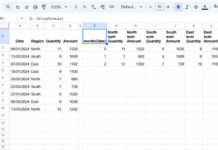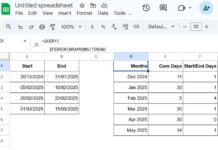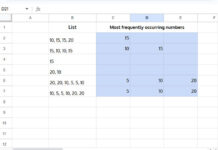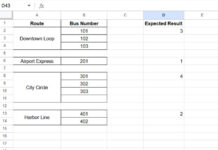The QUOTIENT function in Google Sheets falls under the Math category. It’s often confused with the DIVIDE function, as both are used to divide numeric values. So where does the difference lie? Let me explain.
QUOTIENT vs DIVIDE in Google Sheets
As the name suggests, the QUOTIENT function returns only the whole number part of a division — that is, the quotient without the remainder. On the other hand, the DIVIDE function returns the full result of the division, including any decimals.
Although I’ve already covered the DIVIDE function in a separate post, it makes sense to start this tutorial with a quick refresher, since it’s more commonly used.
Here’s a simple example using DIVIDE:
=DIVIDE(9, 2)This will return 4.5, the same as:
=9/2But if you’re only interested in the whole number part of the division, the QUOTIENT function in Google Sheets is your best bet.
QUOTIENT Function Syntax and Examples in Google Sheets
Syntax:
QUOTIENT(dividend, divisor)Parameters:
dividend– The number you want to divide.divisor– The number you want to divide by (cannot be 0).
Purpose:
The QUOTIENT function in Google Sheets returns the integer part of a division. It discards the remainder and decimal values.
Example:
=QUOTIENT(9, 2)Output: 4 (Unlike 4.5 returned by =DIVIDE(9, 2))
If you’ve already used the DIVIDE function or / operator, and now want to mimic the QUOTIENT behavior, just use the INT function like this:
=INT(DIVIDE(9, 2))or simply:
=INT(9/2)👉 Recommendation:
Use TRUNC instead of INT if your formula may involve negative numbers and you want the behavior to fully match the QUOTIENT function in Google Sheets. While TRUNC removes the decimal portion by truncating toward zero, INT always rounds down toward negative infinity.
Is the QUOTIENT Function Array-Compatible?
Yes, the QUOTIENT function supports array operations. You can pass arrays or column ranges as input using ARRAYFORMULA. Here’s an example:
=ARRAYFORMULA(QUOTIENT(B2:B, C2:C))This will return the quotient for each row in the corresponding columns.





















